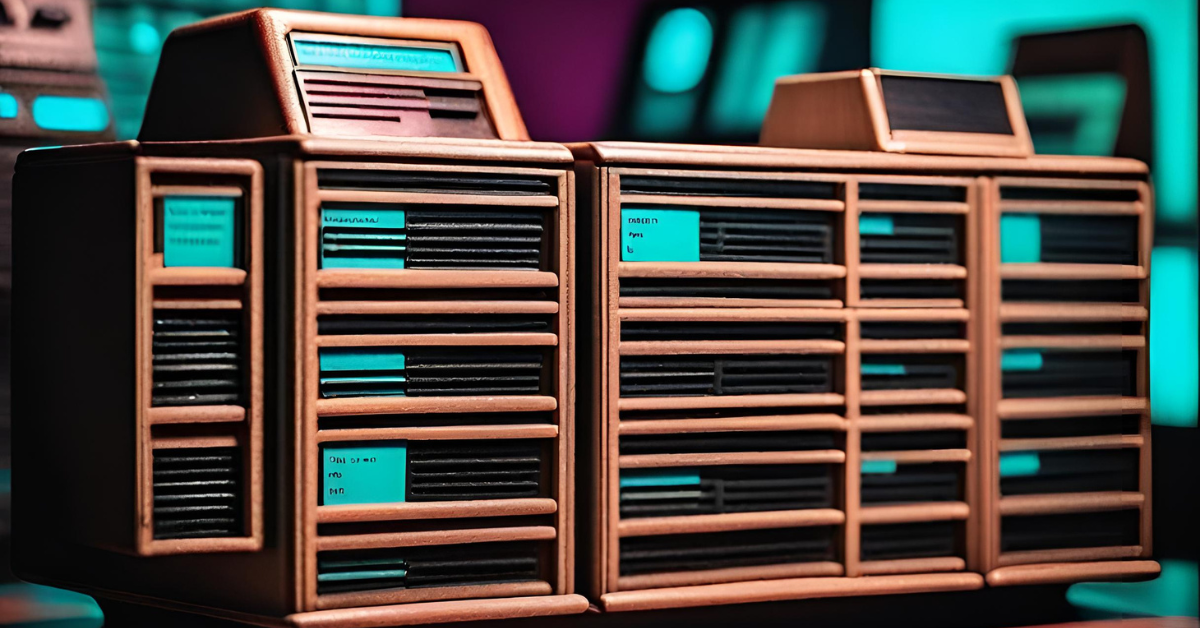
Hijacking the Card Catalog: My Secret Internet Adventures
During my elementary school years, accessing the internet was a far cry from the convenience we enjoy today.
Back then, we didn’t have the luxury of smartphones granting us instant access to the vast expanse of the internet. Instead, we relied on clunky desktop computers and dial-up connections. And let me tell you, it wasn’t cheap. Internet access came with a hefty price tag, charged by the hour rather than a flat monthly fee. For a family like mine, living in a modest farming community, those costs added up quickly.
Our town was situated outside the county limits of a major city, which meant long-distance phone calls were still a costly affair. In addition to paying hourly fees to internet providers, we had to foot the bill for every minute of long-distance usage – often at rates exceeding 25 cents per minute.
Picture a world where each hour of internet connection set you back a minimum of $3.00, plus long-distance fees. It was a steep price to pay, especially for a middle-class family like mine. Even adjusting for inflation to today’s standards, it’s a significant expense that my parents were hesitant to shoulder. As a child, I couldn’t help but feel frustrated by our limited internet access.
An hour of Internet access then at our location would have cost approximately $18 – a whopping $36 with inflation in 2024.
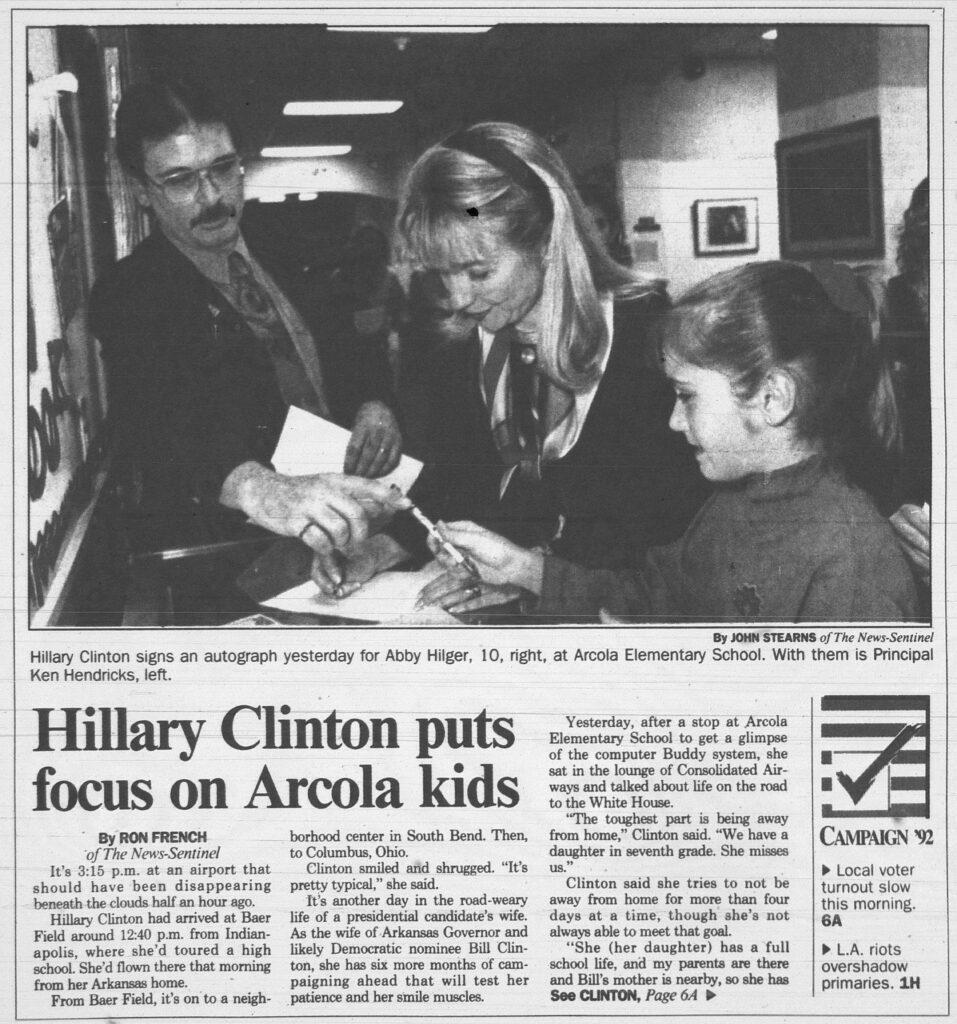
Despite the financial constraints, I was fortunate enough to have access to computers from a young age. Thanks to a forward-thinking initiative championed by Hillary Clinton, my small, rural school was equipped with cutting-edge technology – a rare privilege for a farming community in the middle of nowhere.
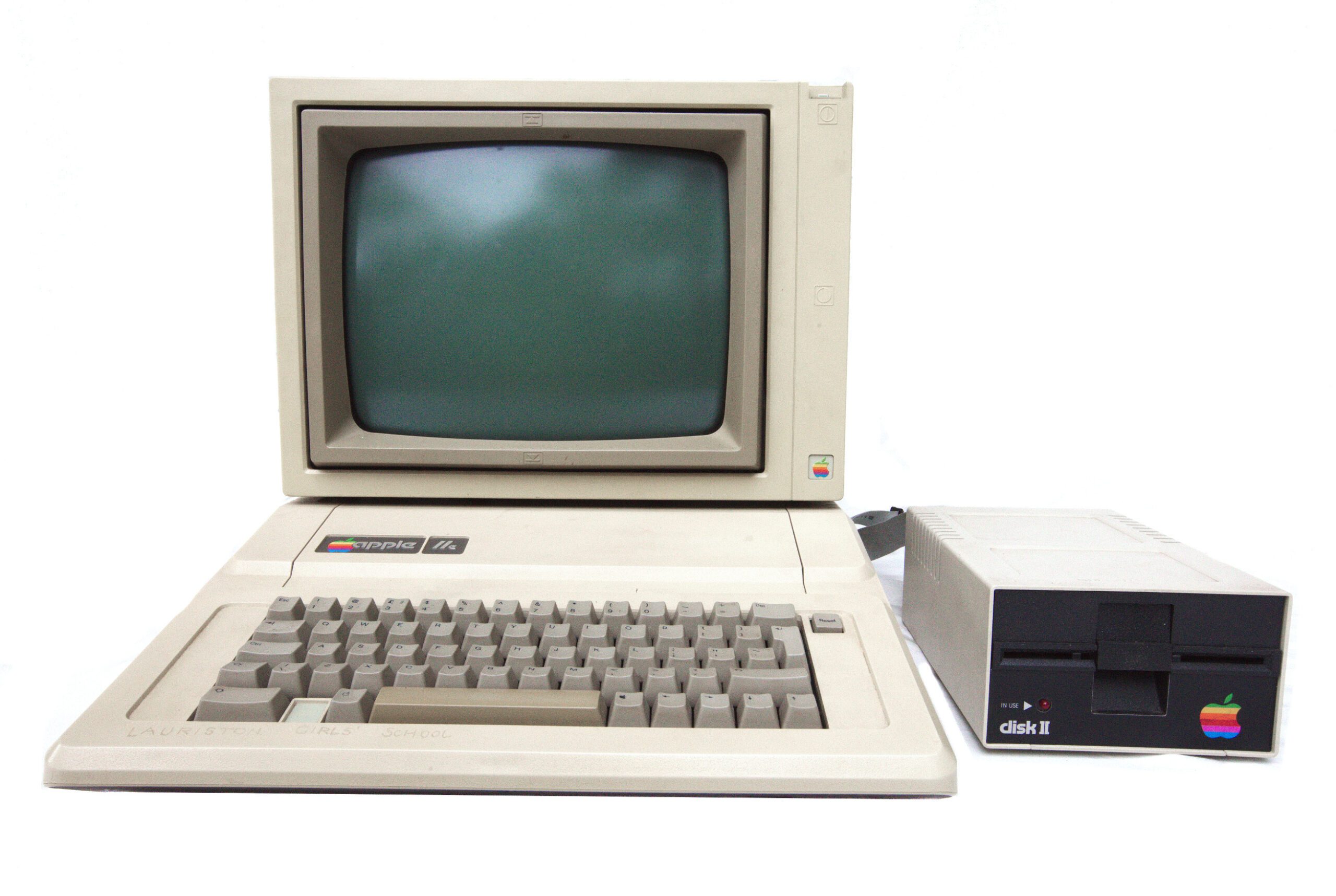
My school participated in a groundbreaking initiative called The Buddy Project, aimed at integrating computers into both classroom learning and students’ home lives. Lucky for me, I was part of the grade chosen for this program, and for six years straight, from 1993 to 1998, my family received a brand-new computer at no cost.

The excitement began when Hillary Clinton visited our school in May 1992. By then, we were already familiarizing ourselves with Apple ][ computers in the classroom. I have vivid memories of those rainy days when recess was canceled, and while other kids headed to the gym, I stayed behind to play Oregon Trail and explore Fort Laramie all the while fighting off dysentery in my wagon’s group.

At home, we were fortunate enough to already have a computer. My dad, a process engineer, had seen the potential of computer simulation programs at work and was captivated by the technology. Despite our tight finances, my parents took the leap and financed an IBM PS/2 E computer from Sears. It was a significant investment, made possible by their determination and a hefty dose of optimism, even with astronomical interest rates. But to us, it was worth every penny – we were now proud owners of a state-of-the-art computer.
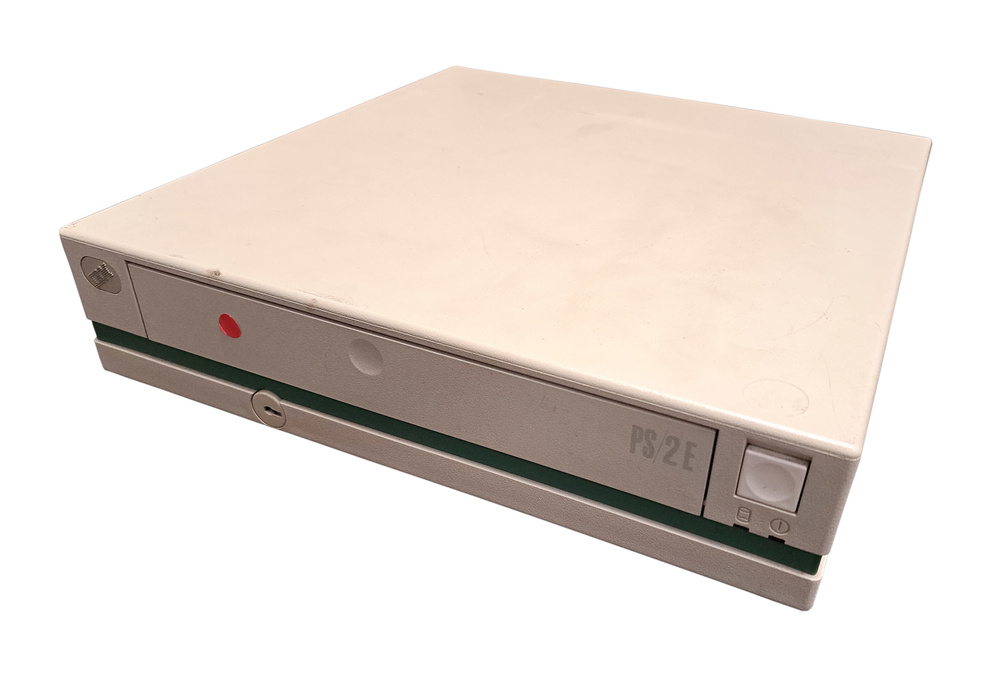
My parents saw the computer not just as a tool for themselves, but as an opportunity for us kids to learn and explore. Little did they know, they were introducing me to a lifelong obsession.
I spent countless summer hours glued to the screen, diving into the depths of Compton’s Interactive Encyclopedia on CD-ROM and tinkering with Windows 3.1. With each click, my imagination soared.
As time went on, the school-issued computer became a permanent fixture in our home. While our IBM PS/2 was impressive, the newer, faster machines we received from school stole the spotlight. At the end of each school year, our parents had the option to purchase the computer, but initially, they held off. After all, our IBM machine was still going strong, and in those days, it was considered top-of-the-line.
Internet access was still a distant dream on our old Windows 3.1 machine. While the school had internet connectivity, it wasn’t yet a staple in student life. We were on the cusp of a digital revolution, but the internet’s widespread use had yet to take off.
In 1995, the winds of change swept through our lives. That year, we didn’t receive our usual new computer right away. Instead, there was a buzz about waiting for machines equipped with Microsoft’s latest operating system: Windows 95. The school computer coordinator assured us that this upgrade would revolutionize our computing experience.
I vividly recall the anticipation building as we awaited the arrival of the new computer. It was a mix of excitement and impatience, knowing we’d have to wait until later in the school year to return the previous system and get our hands on the new one. By the time we returned from winter break, I was practically bursting with excitement, having heard countless news reports about Windows 95 and its promise of unlocking the “power of the Internet.”
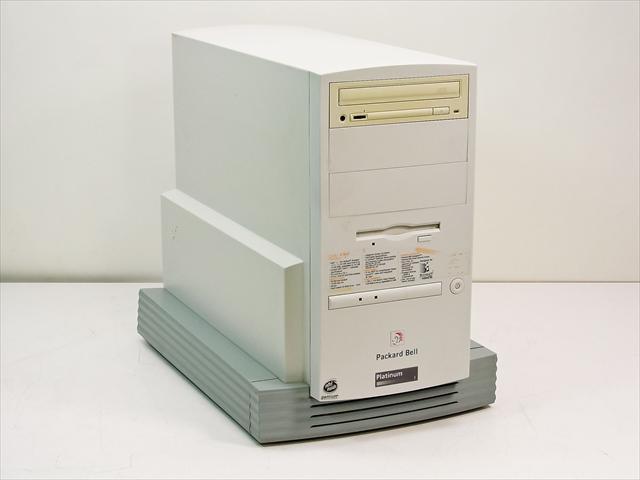
Finally, in March, our new Packard Bell Platinum system arrived. I couldn’t contain my excitement, but I also couldn’t help wondering how it would fit into the current school year. Would we still have the opportunity to upgrade to an even more powerful system at the start of the next school year?
As I fired up the new system and delved into the fresh operating system, thoughts of its eventual replacement faded into the background. I was utterly captivated by the sleek user interface and the plethora of options and settings at my fingertips.
Exploring every nook and cranny of a new computer had always been my modus operandi. I’d dive headfirst into the control panels, sift through settings, and acquaint myself with every keyboard shortcut. Even with the older Windows 3.1 systems, I’d eagerly explore the commands available at the MS-DOS prompt.
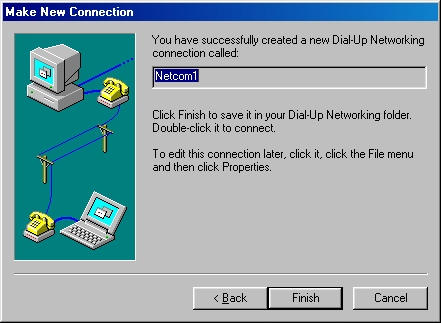
The new Packard Bell Platinum was no exception. As I navigated through the menus, I stumbled upon references to the modem installed in the system. Peering at the telephone port on the back of the machine, a surge of excitement coursed through me. This meant one thing: our system was primed and ready for the internet.
Convincing my parents of the value of internet access wouldn’t be a walk in the park. With the hefty hourly fees and the inconvenience of tying up the phone line – rendering it unusable while online – I knew I had my work cut out for me.
For many years, I was a devoted bookworm. My mom, a self-professed library enthusiast, and I spent countless summer days at the local library. While she chatted with staff, I’d dash to the kids’ section, eager to max out my book quota for the day. Back home, I devoured them at lightning speed, eagerly anticipating our next library visit.
Luckily, my mom was supportive of my reading obsession. Thanks to her friendships with the library staff and our proximity to one of North America’s finest libraries – the Allen County Public Library – she never hesitated to indulge my literary pursuits. Even now, I’d argue it’s one of the country’s top libraries.
The library boasted an innovative electronic card catalog system. I learned about it from one of the librarians, with whom I had struck up a friendship during my frequent visits. They explained how we could dial into a specific number and utilize Telnet – short for teletype network – to access a text-based interface for searching the entire library database. Imagine a world where commands were issued much like at a DOS prompt.
What made it even more remarkable was that the library provided a local number for access. In an era where long-distance calls were a luxury due to their exorbitant costs, having a local number to call was a game-changer.
One day, I decided to connect a phone line to the computer and dial into the local number. As I navigated the card catalog system via Telnet, I meticulously explored every possible command. To my astonishment, I stumbled upon a system administrator area, accessible with the right commands. This discovery led me down a rabbit hole of possibilities, eventually uncovering the ability to open other ports for access within the library network.
During my next visit to the library, I excitedly shared my discovery of the systems area with one of the librarians. She confessed that while she wasn’t well-versed in the technical aspects, the experts at the main branch were handling the development. Her lack of concern, or perhaps underestimation of my abilities as a young child, didn’t deter my curiosity.
On another call to the library systems, I decided to experiment with issuing commands for opening additional ports. I discovered options for FTP, HTTP, and various other services like GOPHER and NEWSGROUPS. Intrigued by the prospect of accessing the World Wide Web, I focused on opening HTTP. Launching Netscape Navigator on my computer, I navigated to the library’s website using a bookmark I had received earlier.

My previous experience with the Internet had been limited to brief sessions at the library, where parental supervision was required. Convincing my mom to spend extended periods accompanying me online was a challenge. During my visits, I had explored a few websites, including the one for my favorite TV channel, Nick.
Browsing the library’s website, I discovered various internet services available through the Library Catalog and other databases. Some services, like searching newspapers nationwide, were restricted to IP addresses within the library.

Feeling emboldened, I attempted to visit the Lycos website and was astonished when it loaded seamlessly. Suddenly, the entire World Wide Web was at my fingertips. After about thirty minutes, I disconnected, wary of drawing attention and hogging the phone line. If anyone in the house had picked up the phone, they wouldn’t have heard the usual dial tone, indicating the line was in use.
Fortunately, no one was around to hear the dial-up noises and handshakes during my initial discovery. Otherwise, my internet escapades would have come to an abrupt end.
After jotting down the command to open the HTTP port, I decided to test my newfound knowledge a few days later. Without accessing the administrative area of the system, I attempted to send the command directly. I had also tinkered with the computer settings to suppress the dial-up networking noises during the handshake, ensuring the sounds wouldn’t give away my activities.
I dialed in and spent about an hour using Lycos to explore the vast expanse of the internet. This marked the beginning of my obsession with the service. Upon returning home from school, I’d rush to the computer, much to my parents’ nonchalance. Since computers were integrated into our classroom and this one was specifically provided for our use, they saw nothing unusual in my behavior.
Over time, I gradually increased my internet usage while decreasing my visits to the library. Despite their likely obliviousness, I couldn’t shake the fear of being discovered. I felt as though I was doing something forbidden, even though in reality, nobody was paying much attention.
My mom and grandma had a tradition of catching up on the phone twice a week, alternating to dodge hefty long-distance charges. Since my sister and I were usually on the line with grandma, I grew accustomed to their phone schedule and organized my internet usage accordingly. Whenever it was my mom’s turn to call, I made sure to stay off the internet, preventing any interruptions. Similarly, when grandma was expected to call, I refrained from online activities to ensure she could get through without encountering a busy signal.
However, one Saturday afternoon, my routine was disrupted. Grandma decided to call earlier than usual and encountered a persistent busy signal for hours. Little did my family know, I had been secretly exploring the digital realm, immersing myself in internet usage. While my parents assumed I was deeply engrossed in programming endeavors—I had taken a keen interest in writing programs for school projects, including quizzes for myself and other students—they were unaware of my online escapades. After spending several hours online, I disconnected, only for the phone to ring minutes later. It was grandma, complaining to my mom about the constant busy signal. Perplexed, my mom suspected a potential phone service issue, contemplating calling the phone company to investigate further.
The plot thickened in my internet escapades when my mom toyed with the idea of adding call waiting to our phone line. Call waiting, with its intrusive tones signaling incoming calls, posed a dire threat to my online adventures. Each tone risked disconnecting me from the digital universe, but at least it served as a covert alert system for incoming calls.
Undeterred, I continued my clandestine internet exploits, leveraging the library’s unwitting provision of online access. However, my covert activities eventually met their match in a fateful event—an event that ultimately led to my parents uncovering my internet shenanigans and the subsequent grounding that ensued.
To the unsung heroes at the library who inadvertently enabled my internet escapades, I offer my heartfelt salute.